I have a large data set that I want to represent with a network graph using igraph. I just don't understand how to get the colors right. Is it possible to get an igraph plot with edge having the same color as vertex color? I my example below, I would like to color vertex and edges according to the status 'sampled' or 'unsampled'. An other problem is that all the edge do not appear on the igraph, and I don't understand why
My code so far is:
d <- data.frame(individual=c(1:10), mother_id = c(0,0,0,0,0,1,3,7,6,7), father_id = c(0,0,0,0,0,4,1,6,7,6) , generation = c(0,0,0,0,0,1,1,2,2,2), status=c("sampled","unsampled","unsampled","sampled",'sampled',"sampled","unsampled","unsampled","sampled",'sampled'))
#Just some settings for layout plot
g <- d$generation
n <- nrow(d)
pos <- matrix(data = NA, nrow = n, ncol = 2)
pos[, 2] <- max(g) - g
pos[, 1] <- order(g, partial = order(d$individual, decreasing = TRUE)) - cumsum(c(0, table(g)))[g + 1]
#Plotting the igraph
G <- graph_from_data_frame(d)
plot(G, rescale = T, vertex.label = d$individual, layout = pos,
edge.arrow.mode = "-",
vertex.color = d$status,
edge.color = d$status,
asp = 0.35)
My question is somewhat similar to this question, but I would like to do it with igraph package. Ggraph node color to match edge color
Thanks for your help

